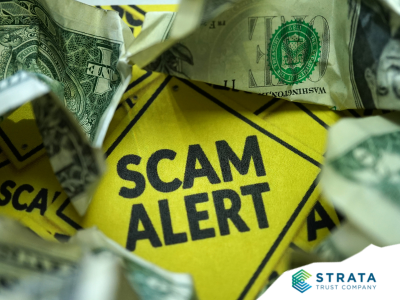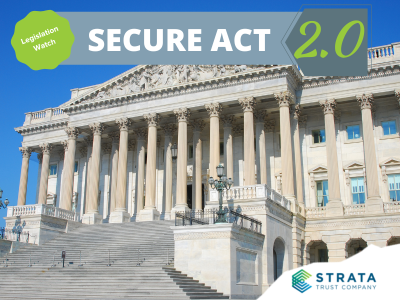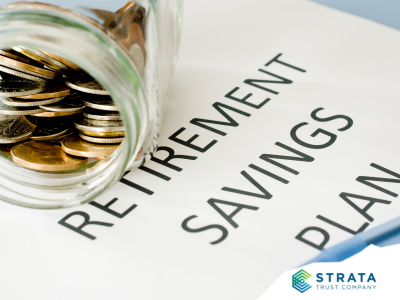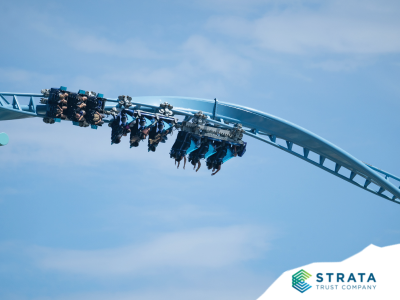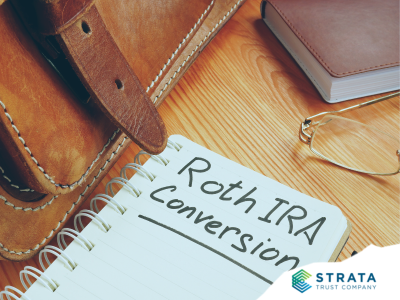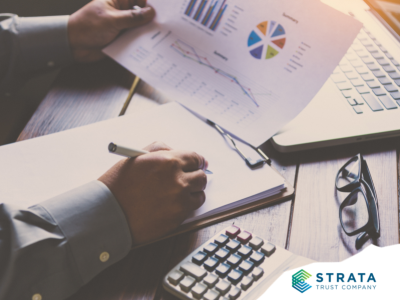Hedging inflation and minimizing risk will always be critical parts of your retirement planning journey. If you are like many other investors seeking alternative solutions to traditional cookie-cutter plans, adding a self-directed IRA (SDIRA) to your retirement planning toolbox might be the right move. SDIRAs offer a wide array of investment options that help manage stock market volatility and deliver greater control over your retirement portfolio decisions.
So, what do you need to know to get started? Understanding the IRA options available and knowing your responsibilities as the account holder are the first steps to help you discover the best self-directed IRA for you.
Tax-Advantaged Retirement Savings
Unlike a traditional savings account, IRAs are retirement accounts that give investors the option to take advantage of tax benefits, while watching their savings grow with compound interest. There are several types of tax-advantaged retirement savings accounts that you can self-manage including, but not limited to, Traditional IRAs, Roth IRAs, SEP IRAs, and SIMPLE IRAs. You can choose the right type for you by your employment status. If you are employed, a Roth or Traditional IRA might be the right fit. If you are a solopreneur or have a small to mid-size business, then a SEP or SIMPLE IRA might be the better option.
TRADITIONAL VS. ROTH IRA
A self-directed Traditional or Roth IRA can complement your existing 401(k) or other workplace savings plan by adding greater investment diversification. A Traditional IRA allows investors to direct pretax income towards investments on a tax-deferred basis. A beneficial feature of this SDIRA type is that there are no capital gains or dividend income taxes until it is withdrawn. Traditional IRAs can be converted to Roth IRAs by paying income taxes (without penalties) on the IRA distribution before rolling over to a Roth IRA.
With a Roth IRA, investors can set aside post-tax income each year, up to a specified amount. Once the account holder reaches 59½, all earnings on the account and withdrawals are tax-free. A unique feature of Roth IRAs is that annual contributions can be made at any age, as long as you have earned income — making it a popular option for younger investors. Although contributions are not tax deductible, there are no mandatory withdrawals or distributions to worry about. The chart below details the key differences between Traditional and Roth IRAs:
| TRADITIONAL | ROTH |
| Annual contributions are tax-deductible. | Annual contributions are not tax-deductible. |
| Mandatory withdrawal by April 1 of the year following the year you reach age 72 (or 70½ if you reached that age before 2020). | Mandatory withdrawals or distributions at any age are not required. |
| Taxes are paid on earnings when withdrawn from the IRA. | Earnings and principal are tax-free as long as you follow IRS rules. |
| Funds withdrawn before age 59½ are subject to a 10% penalty tax. | Principal contributions can be withdrawn at any time without penalty as long as the required five-year holding period is met. |
For a more in-depth comparison, try using our Roth vs. Traditional IRA Calculator.
SEP vs. SIMPLE IRA
A Simplified Employee Plan (SEP) IRA is a retirement plan established by an employer that permits them to make deductible contributions to a Traditional IRA on behalf of the employees. SEP IRAs tend to be a flexible option—employers have the liberty to choose how much they want to contribute, capped at 25% of earned income, and any type of business entity can open a SEP IRA.
A SIMPLE IRA, named after the acronym for Savings Incentive Match Plan for Employees (SIMPLE), allows employers to plan for their employees’ retirement as well as their own. Specifically designed for small businesses with 100 or fewer employees, SIMPLE IRAs operate by having employees make salary-reduced contributions while receiving matching contributions up to 3% from their employer. Both SEP and SIMPLE IRAs may be converted to a Roth IRA by paying income taxes (without penalties) on the IRA distribution before rolling over to a Roth IRA. The chart below explains the key differences between SEP and SIMPLE IRAs:
| SEP | SIMPLE |
| Best suited for smaller, family-owned businesses or businesses with no employees. | Best suited for small businesses with 100 or fewer employees. |
| Accounts can be opened by any type of business entity. | Accounts can only be opened by certain types of business entities. |
| Employers can choose to fund or not fund the account each year. | Employers are required to match the employee’s contributions up to 3%. |
| Once the account is funded, it is 100% vested to the employee. | Once the account is funded, it is 100% vested to the employee. |
The IRS publishes annual contribution limits for each type of SDIRA, so your maximum contribution amount will vary depending on the SDIRA you choose.
The “Self” in Self-Directed
SDIRAs are unique in that they are regulated by exclusive, rather than inclusive, IRS rules. Federal law requires that all IRA accounts be held by a custodian or trustee and in the case of an SDIRA, the IRA custodian simply custodies the asset for the IRA owner. The term self-directed is used because the IRA owner is ultimately responsible for investment decisions including following IRS rules and regulations. It is also up to the account holder to complete their own due diligence on the investments and investment promoters/advisors that they choose to work with prior to investing. IRA custodians choose which type of assets they will custody but typically do not investigate the validity of an investment, the background of an investment promoter, or the accuracy of any financial information provided by the investment promoter.
INVESTOR EDUCATION
Private equity investments like venture capital funds, private start-up company stock, de novo bank stock, and private debt investments such as promissory notes and mortgage notes are just a few popular SDIRA investment options. When reviewing your next investment opportunity it’s critical to be aware of common schemes in the market and have a list of resources to double-check your intuition. If you think an investment is too good to be true, it likely is. Even the most seasoned investors can fall prey to fraudulent investments, so it’s crucial to be informed when you are a self-directed investor. In addition to your own sources, the U.S. Securities and Exchange Commission (SEC), North American Securities Administrators Association (NASAA), and the IRS provide a variety of tools and services:
| Information for the Individual Investor | SEC.gov – Investor tools, informative publications, tips for recovering funds, and more |
| Investor Education | NASAA.org – Investor advisories, fraud center, multimedia library, how-to’s, and more |
| IRS Publication 3125: The IRS Does Not Approve IRA Investments | IRS.gov- Tips for protecting yourself against “IRA Approved Schemes” |
RESEARCH TOOLS
Secure, reliable methods of independent research also include contacting your state’s securities regulator, utilizing the Financial Industry Regulatory Authority’s (FINRA) BrokerCheck platform, and crosschecking investment entities with the SEC’s Action Lookup for Individuals (SALI) and Investment Adviser Public Disclosure platforms. These tools and services are linked below for your convenience:
| FINRA’s BrokerCheck | FINRA’s free tool for researching the background and experience of financial brokers, advisers, and firms. |
| Contact Your State’s Securities Regulator | NASAA’s source for contact information and other resources for state and provincial securities regulators. |
| Action Lookup – Individuals | SEC’s database for individuals with court or commission orders entered against them. |
| Investment Adviser – Public Disclosure | SEC’s database for viewing registration/reporting forms filled out by Investment Adviser Firms and the professional background and conduct of individual investment adviser representatives. |
Additional resources can be found on STRATA’s Protect Yourself page.
Talk to An Expert
For a better understanding of your specific situation and the best fit for you, connect with a financial advisor, tax, or legal professional to make sure you have a comprehensive retirement plan that includes income goals and the appropriate investment risk tolerance for your needs. Adding an SDIRA to your mix may be the missing tool you have been needing to get control of your retirement. Continue your discovery on our website – learn more about IRA rules and regulations and gain insight on selecting an IRA service provider that makes self-directing simple.
STRATA Trust Company is an IRA custodian that specializes in holding alternative assets within self-directed IRAs. For more than two decades, our customers have commended STRATA for our experience in the industry, our expertise in many different asset classes, and our easy-to-use technology that simplifies the sometimes complex nature of alternative assets within IRAs. For questions about the different types of IRAs available for self-directing, or if you’re ready to start investing, contact one of our self-directed IRA experts today.

